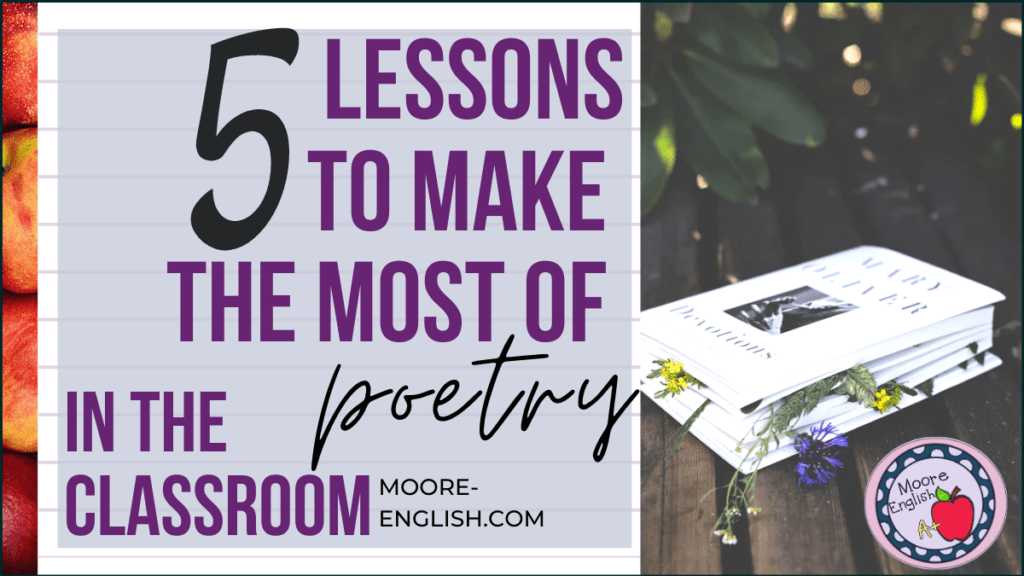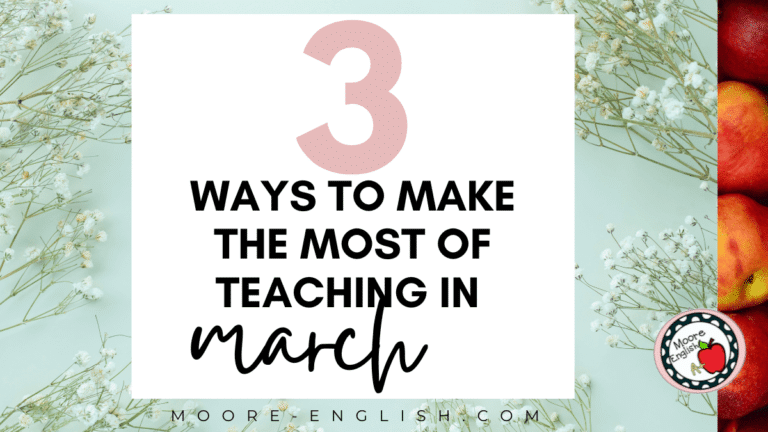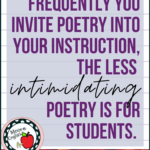Teaching poetry is one of my teaching superpowers. Frequently incorporating poetry throughout the year (rather than isolating it in a single unit) demystifies poems. The more frequently you invite poetry into your instruction, the less intimidating it is for your students. Further, poetry can also be a great tool for targeting specific skills in the classroom!
This post this post may contain affiliate links. Please read the Terms of Use.
Structural Elements of Poetry
Pre-reading and annotating is an essential part of helping students appreciate the intricacies of poetry. In particular, annotating poetry can help students reveal text structure and syntax. As a pair, text structure and syntax give complementary views of a poem.
Firstly, understanding text structure gives an overhead or bird’s eye view of poem. In other words, analyzing text structure reveals the Big Picture.
Secondly, analyzing poetry is detailed work. Noting syntax happens on a smaller (but not less important scale). In other words, analyzing syntax reveals the Small Picture.
Analyzing text structure and syntax together provides insight into the entire text. When read together, students can make inferences about author’s purpose and main idea. Here are some poems with meaningful text structures:
- Discuss a modern twist on sonnet form with “Time does not bring relief; you all have lied” by Edna St. Vincent Millay
- “The World is Too Much With Us” by William Wordsworth also uses text structure in an interesting and meaningful way
These poems all use questions in interesting ways and provide students with an opportunity to analyze syntax
- “You Could Never Take a Car to Greenland” by Maggie Smith
- “For the Consideration of Poets” by Haki R. Madhubuti
- “The Summer Day” by Mary Oliver
- “Respiration” by Jamaal May
Connotation and Figurative Language
In addition to structural elements, analyzing language is an important part of teaching poetry. When students encounter a poem, teachers have an opportunity to emphasize language skills.
Because poetry happens in such a condensed space, poets have to make every word choice count. For this reason, it provides a great opportunity to teach lessons about connotation.
Similarly, poets are experts in figurative language. So poetry also provides teachers an opportunity to teach figurative language. In the space of one poem, students can practice identifying, analyzing, and evaluating figurative language. When students write their own poetry, they can practice applying figurative language.
Here are some resources to create lessons about teaching language skills:
- “Sympathy” by Paul Laurence Dunbar
- “Thanatopsis” by William Cullen Bryant
- “I heard a Fly buzz–when I died-“ by Emily Dickinson
Poetry as Historical Artifact
Like all literature, poetry is a reflection and a response to its historical context. Because poems come in all shapes and sizes, they can provide unique insights into the historical and cultural contexts in which they were written and published. Here are some poems that comment on historical context:
- “The Death of the Ball Turett Gunner” by Randall Jarrell
- “The Ebb and Flow” by Edward Taylor
- Homer’s The Odyssey

Photo by Ksenia Makagonova on Unsplash










